THis space is dedicated to harm reduction practices with an LGBTQ+ Lens

Harm Reduction and Stigma Disruptors:
-

Reducing Shame & Promoting Autonomy
Youth internalize stigma if sexual health conversations feel judgmental.
Use neutral language and reinforce that curiosity, identity exploration, and sexual development are normal.
Harm reduction is about meeting youth where they are, rather than trying to direct their identity or behavior.
Consider This- Lower social economic status and housing insecurity (high risks among LGBTQ+ Youth) may lead to sex work. Providing harm reduction will support safety while needs can be addressed to secure housing etc. without shaming.
-

Trauma Informed Care - A universal Precaution
LGBTQ+ adolescents experience very high rates of trauma (victimization, discrimination, abuse, bullying)
In a survey of 13-24-year-old LGBTQ+ youth, 37% reported high levels of trauma symptoms
Trauma-informed care (TIC) means recognising the likelihood of trauma, using care practices that avoid re-traumatisation, and actively promoting safety, trust, and empowerment.
Create safe, predictable settings.
Build trust and choice (youth autonomy).
Use inclusive, affirming language and respect identity.
Screen for trauma, mental health symptoms, and connected stressors (ex: family rejection, housing instability).
Transforming Trauma in LGBTQ+ Youth Resources (Click Here to learn more)
-

Affirming Care - Its more than hormones & puberty blockers
Affirming care helps reduce the medical/systemic trauma that many LGBTQ+ youth face.
More than half of LGBTQ+ youth report negative or discriminatory healthcare experiences.
Providing affirming, trauma-aware care includes using inclusive language, asking about identity respectfully, creating safe environments, and integrating knowledge of gender and sexually diverse individuals’ stress into practice.
When care is affirming, outcomes improve!
A study of transgender and nonbinary youth by Tordoff et al. (2022) found that initiation of puberty blockers or gender-affirming hormones was associated with about 60% lower odds of depression and about 73% lower odds of suicidality over 12 months.
-

LGBTQ+ Youth at Higher Risk
Adolescents, young adults, and men who have sex with men (MSM) are at higher risk of STIs.
LGBTQ+ youth may face barriers to care (stigma, provider knowledge gaps, confidentiality concerns).
Tailor harm reduction - acknowledge minority stress, overlapping risks (like substance use), and apply inclusive practice.
-

Substance Use/Misuse & Sexual Risk
LGBTQ+ youth may use substances to cope with stress, rejection, or dysphoria.
Substance use can affect safer sex, consent, and boundary-setting.
Ask neutral, behavior-based questions (no assumptions):
“Do you ever use alcohol or drugs when you’re hooking up?”
“How does substance use affect decisions about protection?”
Check out these Examples from That Gay Doctor
Provide harm reduction strategies:
1) Plan protection before using substances
2) Keep condoms/internal condoms and lube accessible
3) Access to clean supplies and test strips
Consider PrEP/PEP when indicated.
Screen regularly for co-occurring stress, mental health concerns, or safety risks.
Offer referrals to LGBTQ-affirming support resources when needed.
-

Sex Education Doesn’t Increase Risky Behaviors
High-quality, medically accurate, developmentally appropriate sex education is associated with safer behaviours: delayed initiation, fewer partners, and higher condom/contraceptive use.
Provider role: integrate LGBTQ-inclusive education into counselling (e.g., include transgender/nonbinary experiences, queer relationships).
Frame sex education as part of holistic wellness rather than purely risk-avoidance
For every $1 spent on STI prevention that’s $7 saved in healthcare costs!
Evidence does not support harm reduction education leads to more risky behaviors.
-

Contraception Counseling
Offer contraception access for all bodies with pregnancy potential, regardless of gender identity.
Discuss dual protection: contraception plus STI prevention.
Use inclusive language: “If you have the capacity to become pregnant…” rather than assuming based on gender identity.
Ensure youth understand how gender-affirming hormones may interact with contraception (if applicable).
Revisit contraceptive needs periodically, as identity, partnerships, and goals may change.
-

PrEP, PEP, & Doxy/PEP
Discuss PrEP (HIV Pre-Exposure Prophylaxis) for youth at increased HIV risk.
Explain PEP (Post-Exposure Prophylaxis) must be started within 72 hours of a possible exposure.
Provide access or a direct referral pathway — delays reduce effectiveness.
Clarify: Youth can often self-consent depending on state law.
Link to How to Provide PrEP
Link to Doxy/PEP Toolkit for Healthcare
-

STI Prevention and Testing
Screen based on anatomy + behavior. Regardless of identity: ask “what body parts do you use for sex?”
Encourage regular testing for high-risk youth (adolescents, MSM, LGBTQ+ youth) per guidelines (see below).
Provide barrier methods (condoms, dental dams, internal condoms) and counsel on correct and consistent use.
Frame testing as routine health maintenance (“like getting your annual physical”) to reduce stigma.
Emphasize that providing sex education or offering testing does not increase sexual risk behaviors.
STI Screening Recommendations
-
HIV test at least once between the ages of 13–64.
Retest if new risk factors develop (multiple partners, condomless sex, injection drug use).
-
Chlamydia: screen yearly.
Gonorrhea: screen yearly.
Syphilis: if at increased risk (multiple partners, high-prevalence area).
HIV: at least once; repeat if risks.
Consider PrEP & Doxy/PEP
-
Screen for chlamydia & gonorrhea only if risk factors are present (new/multiple partners, inconsistent condom use).
Continue HIV & syphilis testing if risk factors apply.
Consider PrEP & Doxy/PEP
-
Chlamydia & Gonorrhea: screen yearly at all exposed sites (urethra, rectum, throat).
If high-risk (multiple partners, anonymous partners, drug use with sex): test every 3–6 months.
Syphilis: at least yearly, more often if at risk.
HIV: test at least yearly; every 3–6 months if high-risk.
Consider PrEP & Doxy/PEP
-
Screen based on anatomy and sexual practices (not just gender identity).
Example: People with a cervix → cervical chlamydia/gonorrhea testing.
People with a penis engaging in receptive anal sex → rectal gonorrhea/chlamydia testing.
Follow MSM and general adolescent recommendations depending on behavior and anatomy.
Consider PrEP and Doxy/PEP
-
Chlamydia & Gonorrhea: screen at first prenatal visit; repeat in 3rd trimester if at risk.
Syphilis: test at first prenatal visit; repeat later in pregnancy if high-risk or high-prevalence area.
HIV: test at first prenatal visit; retest in 3rd trimester if risk factors.
Hepatitis B & C: screen all pregnant people at the first prenatal visit.
Consider PrEP and Doxy/PEP

